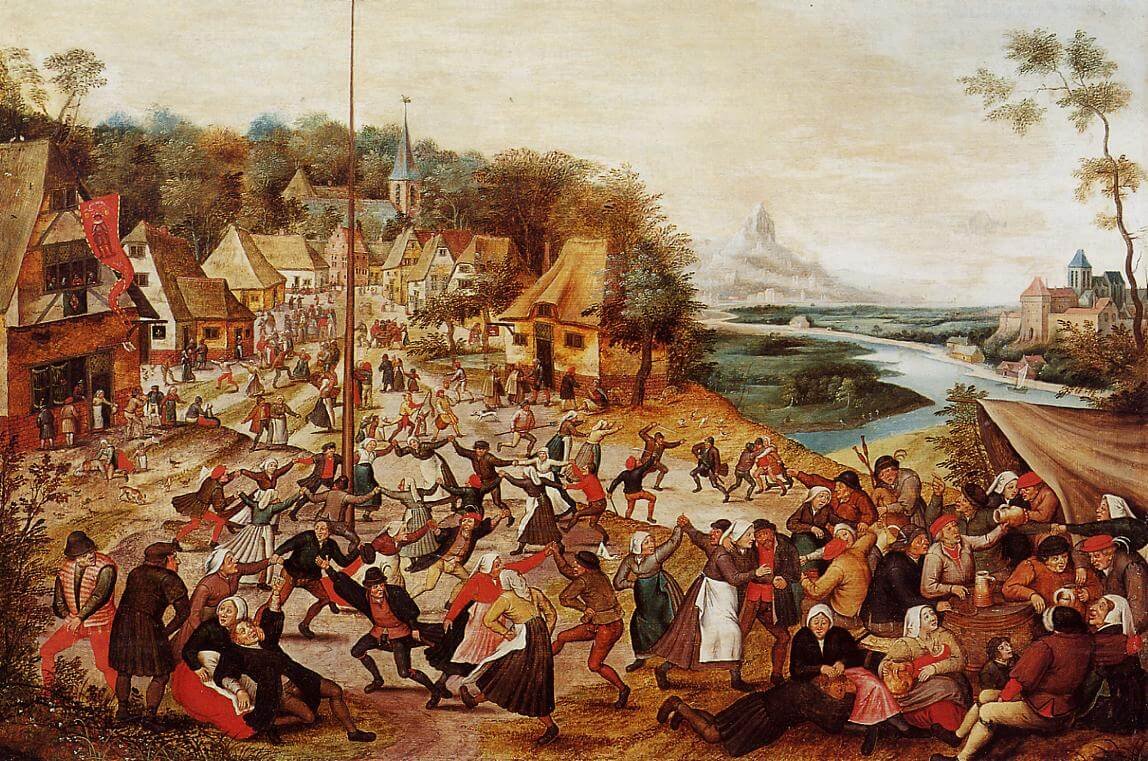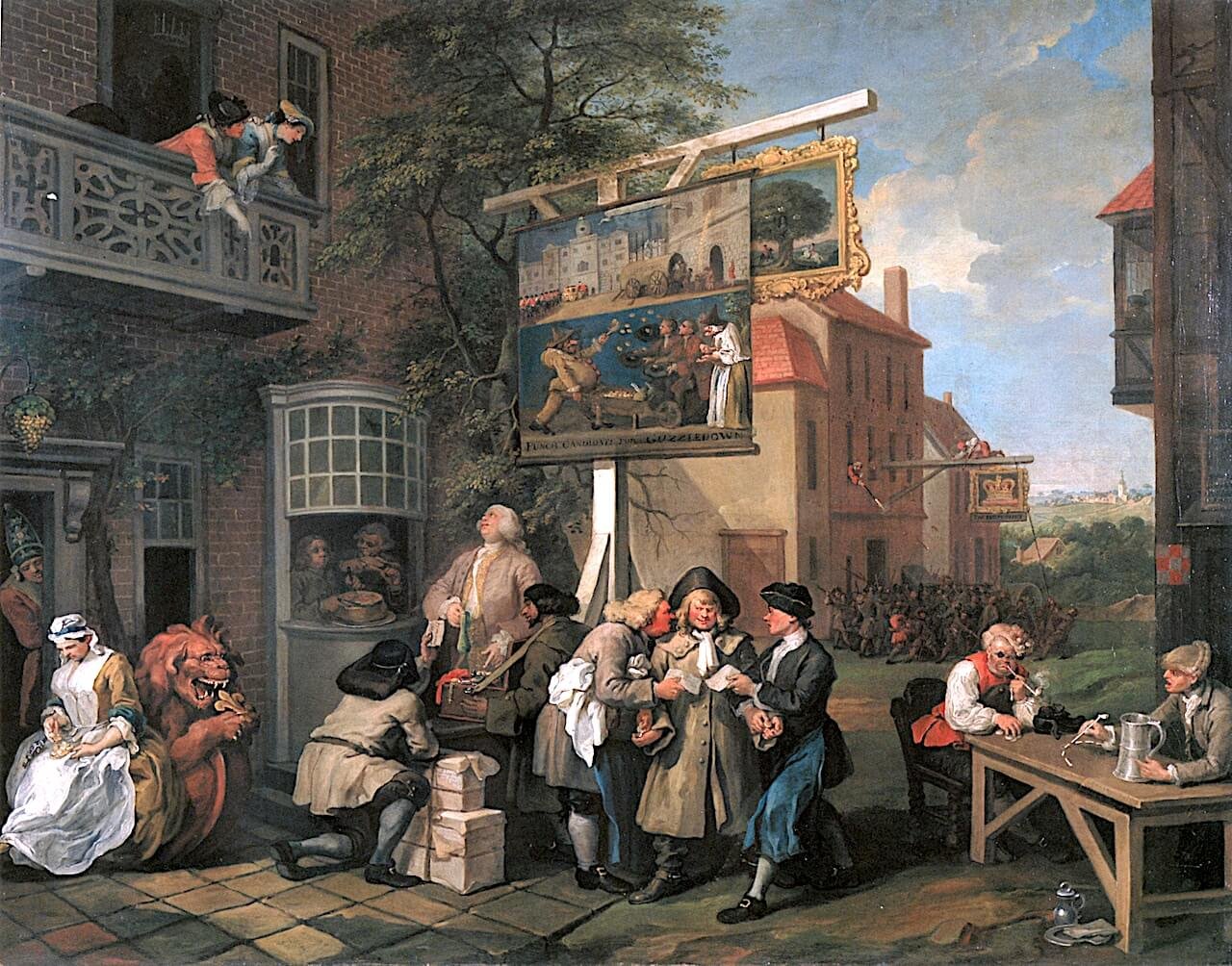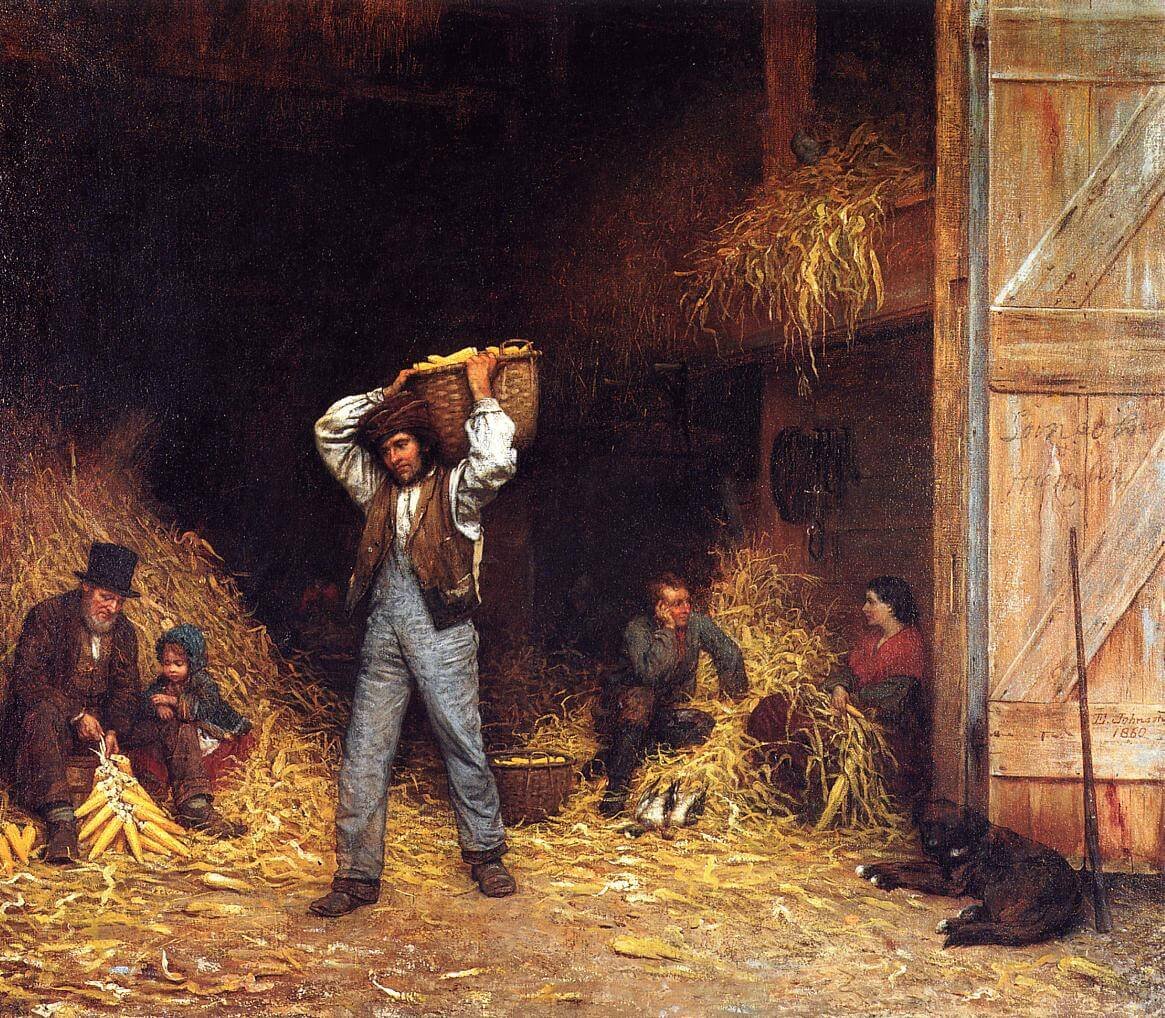When we often talk about genre in art, it usually means the same thing as genre in music, books, or movies. It refers to categories or different types of subjects. However, one of the five major genres of European painting is called genre painting, so there’s literally a genre called genre. (Please don’t ask me how it got this name, because I really have no idea.) Let’s explore this idea further.

What is Genre Painting?
A genre painting is a scene of everyday life – ordinary people doing ordinary things. It might show people shopping in an outdoor market, a woman reading a letter in an interior, a maid washing dishes,
children playing, or all sorts of other habitual scenes. It might be set in the city or countryside, indoors or out, and among all different classes and cultures of people. Genre paintings may be straightforward, serious, sentimental, or comical, and they may carry messages or moral lessons. The possibilities are really endless, and a wide variety of scenes could potentially be counted in this category.
Origins

Genre painting began in northern Europe in the 17th century with energetic and comical paintings of peasant life like those of Jan and Pieter Brueghel and Frans Hals. Dutch and Flemish genre paintings don’t always take this tone, however; nearly every calm and elegant scene by Vermeer can be characterized as a genre painting. Perhaps because it’s so versatile, genre painting became popular throughout the Euro-American world, often with a strong satirical, sentimental, or moralizing aspect depending on the audience. Paintings of elegant people doing elegant things, like Chardin’s Soap Bubbles or Watteau’s fetes galantes (scenes of upper-class people at leisure and romance in idealized pastoral settings) could also fit into this category.
Reputation
In the hierarchy of European painting established by the academies of Paris and London, genre painting was firmly in the middle as the third most significant of the five genres. In its favor was its reliance on human figures, which were the most important aspect of any academic painting. On the other hand, genre paintings are all about the ordinary and everyday, not the elite and intellectual subject matter that made history paintings take the number one slot. Even portraits typically depicted high-status individuals, while genre paintings frequently depicted working class people and even peasants, which was a black mark in class-conscious historical Europe.

That being said, genre paintings had the major advantage of being approachable in their relatively modest size and ordinary subject matter, as well as affordable in price. They may not have been prestigious, but they certainly were popular, especially in times and places with large, middle-class populations and commercial art markets rather than systems based on private commissions. Genre paintings were also usually good candidates to be converted into mass-produced prints to reach even wider and humbler art-buying audiences. Unsurprisingly, this genre tended not to be especially popular with wealthy aristocratic patrons, but scholars have suggested that middle and upper-class audiences had a taste for peasant scenes so that they could feel superior.
Although the term “genre painting” rarely appears in modern and contemporary art, the idea of painting scenes from everyday life remains a popular one. We don’t call an Impressionist painting of a city cafe, Van Gogh’s potato eaters, or a scene of contemporary people going about their day by the term genre painting anymore, but all of these are modern and contemporary heirs to a rich tradition begun in the 17th-century.
Sources
- “Art Term: Genre Painting” Tate Britain.
- Clarke, Michael. Oxford Concise Dictionary of Art Terms. Oxford: Oxford University Press, 2010. p. 107.
- Meagher, Jennifer. “Genre Painting in Northern Europe” In Heilbrunn Timeline of Art History. New York: The Metropolitan Museum of Art, 2000–. (April 2008)

